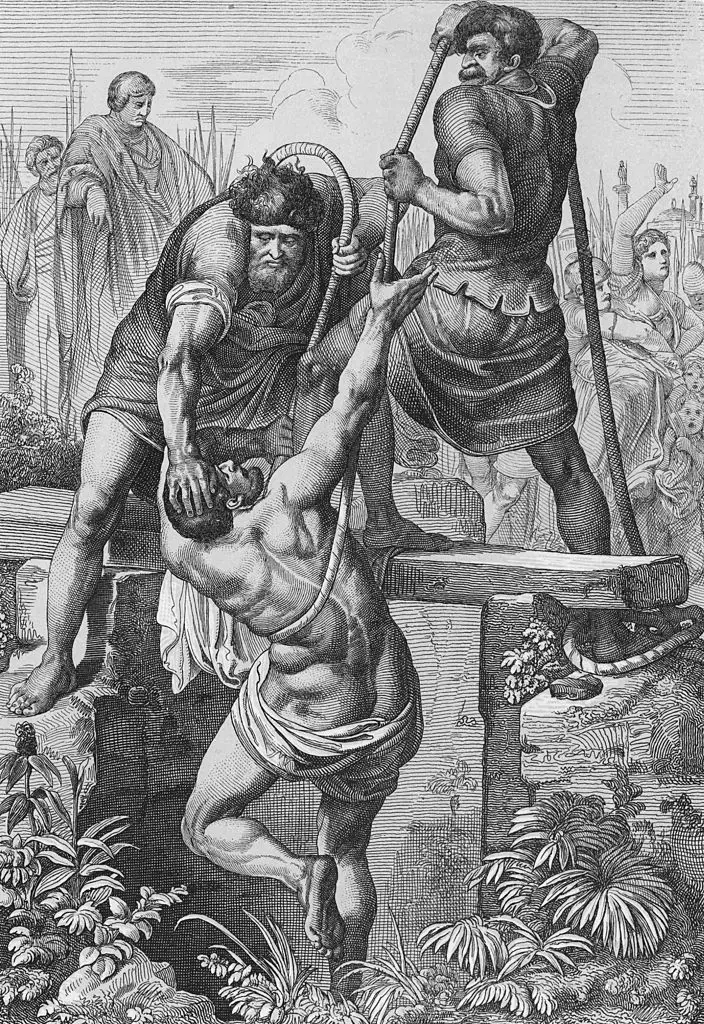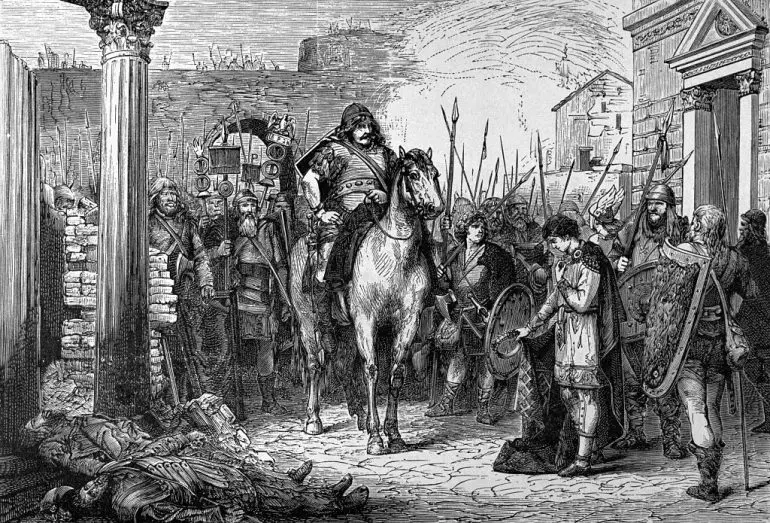Zeno, the Isaurian outsider who rose to prominence as the Eastern Roman Emperor, stands as a testament to resilience and determination during a time of chaos and upheaval. Amid the decline of the Western Roman Empire, his astute diplomacy, alliances with barbarian groups, and unwavering leadership helped stabilise the eastern realm.
Facing numerous revolts and usurpers, including his own brother, Emperor Zeno navigated a treacherous landscape of political intrigue and danger to maintain his grip on power. Although his efforts to reconcile the divided Christian church ultimately failed, his legacy in shaping the foundation of the Byzantine Empire remains significant.
A complex and remarkable figure – and one of the very few rulers throughout history to have succeeded his own son – his reign serves as a compelling story of triumph and tribulation, leaving an indelible mark on the annals of history. He was a ruler who defied the odds, ensuring the continued prosperity of the Eastern Roman Empire.
This is the tale of Roman Emperor Zeno. We’ll also find out the astonishing answer to the question ‘how did Emperor Zeno die.’
The Early Life of Zeno

Zeno the Isaurian, originally known as Tarasis Kodisa Rousombladadiotes, was an Isaurian officer serving in the Eastern Roman army. (Photo by: Pictures From History/Universal Images Group via Getty Images)
Zeno was born around 425 AD in Isauria, modern-day Bozkir in southwestern Turkey. Despite the fact the tribes from this region were technically Roman subjects, and not formally excluded from assuming power, they were still considered to be outsiders. This was to be a lifelong struggle for the Eastern emperor Zeno.
The earliest references to Zeno, then named Tarasikodissa, are from the mid 460s when Emperor Leo I of the Eastern Roman Empire saw that the strength of the Roman army was heavily weighted towards Germanic soldiers led by Aspar, the leader of the Alans. To redress the balance, Tarasikodissa was – with others – tasked with creating an Isaurian military force to serve alongside the Germanic soldiers.
His stock continued to rise and between 466 AD and 468 AD he served as magister militum, or Master of Soldiers, in Thrace – modern-day Bulgaria, Greece and Turkey – and Antioch in southern Turkey.
Imperial Power

Coin representing Zeno (Photo by DEA/J. E. BULLOZ/De Agostini via Getty Images)
Signifying both his continued rise and his importance within the Empire, Zeno then married Ariadne, the daughter of Emperor Leo I. They had a son, also called Leo. Zeno now stood as father to the defacto heir to the throne itself.
When Leo I died in 474 AD, Leo II was crowned emperor at the tender age of just seven. Leo II was too young to rule, so the imperial court or advisers named his father co-emperor. Sadly however, Leo II also died in 474 AD, and Zeno became the sole emperor of the Eastern Roman Empire.
The First Reign of Roman Emperor Zeno

Death Of Basiliscus (Photo by Kean Collection/Getty Images)
Despite his initial successes – including securing a lasting peace with the Vandal kingdom in North Africa – the internecine struggles that blighted his emperorship were evident from the very beginning of his reign.
Due in part to his perceived barbarian origins, the first plot to overthrow Zeno came in early 475 AD, from his widowed mother-in-law Verina, her brother Basiliscus, her partner Patricius, and a mercenary general named Theodoric Strabo.
The plot quickly gathered support and Zeno was forced to flee Constantinople along with his family. Crucially, he managed to gather the imperial treasury before he left, significantly weakening the position of his opponents.
Before long, internal conflicts arose among the conspirators. Basiliscus seized the throne, executed Patricius, and allowed the massacre of the remaining Isaurians in Constantinople. Without easy access to funds Basiliscus was forced into a policy of heavy taxation and his popularity with the people plummeted.
Facing discontent and a city-wide fire, Basiliscus next lost the support of the Senate, which secretly sided with Zeno. Much of the army now switched their support to Zeno, who now marched on Constantinople.
In August 476, Zeno besieged Constantinople, and soon the Senate opened the gates to him. Zeno was once again raised to the imperial throne. Basiliscus and his family sought refuge in the Hagia Sophia but later surrendered, trusting Zeno’s promise not to harm them. However, Zeno sent them to a Cappadocian fortress, leaving them to die in a dry cistern.
The Second Reign of Roman Emperor Zeno

Romulus Augustulus Surrenders To Odoacer (Credit: Bettmann/Contributor via Getty Images)
Beyond his own borders, the year 476 AD witnessed one of the most seismic changes in the history of the western world, when the young emperor of the Western Roman Empire, Romulus Augustulus, was overthrown. This brought a final end to the ailing Roman Empire in the West.
While Roman emperor Zeno dealt with the ramifications of the Western Roman Empire’s fall, he was again forced into battle against potential usurpers. This time against his brother-in-law Marcian in 479 AD, who turned the population of Constantinople against the emperor. The revolt was crushed and Zeno, helped by his loyal general Illus, held onto the throne.
Further revolts by Theodoric Strabo around 480 AD and Illus himself in approximately 484 AD – whose rebellion eventually ended in 488 AD – were a recurring theme of Zeno’s reign as emperor.
The Later Years of Emperor Zeno

Circa 500 AD, King Theodoric 'The Great' (455 - 526), of the Ostrogoths. (Photo by Hulton Archive/Getty Images)
Following the suppression of the revolt led by Illus, Zeno spent the later years of his life focused on consolidating his power and maintaining the stability of the Eastern Roman Empire.
He continued to forge strategic alliances with barbarian groups, including the Ostrogoths, who he successfully relocated to Italy under the leadership of Theodoric the Great. This move not only removed a potential threat to the empire but also led to the establishment of the Ostrogothic Kingdom.
Zeno’s later reign saw ongoing efforts to reconcile the religious divisions within the Christian church, through his ultimately unsuccessful attempts to bridge the gap between Chalcedonian and Miaphysite beliefs through a religious document he issued in 482 AD known as Henotikon, translated as ‘Act of Union’.
Despite these setbacks, and the fact that he remained largely unpopular, Roman emperor Zeno’s rule laid the groundwork for the flourishing Byzantine Empire that emerged in the wake of the Western Roman Empire’s collapse.
How Did Emperor Zeno Die?

Zeno the Isaurian (Photo by: Pictures From History/Universal Images Group via Getty Images)
Zeno died in Constantinople – modern-day Istanbul – in 491 AD from a cause that remains uncertain, with possibilities including dysentery, epilepsy, or alcohol-related complications.
Zeno left behind a legacy of resilience and perseverance in the face of considerable adversity. His reign stands as a testament to the remarkable transformation of an Isaurian outsider into a key figure in the history of the Roman Empire, shaping its future trajectory for centuries to come.












